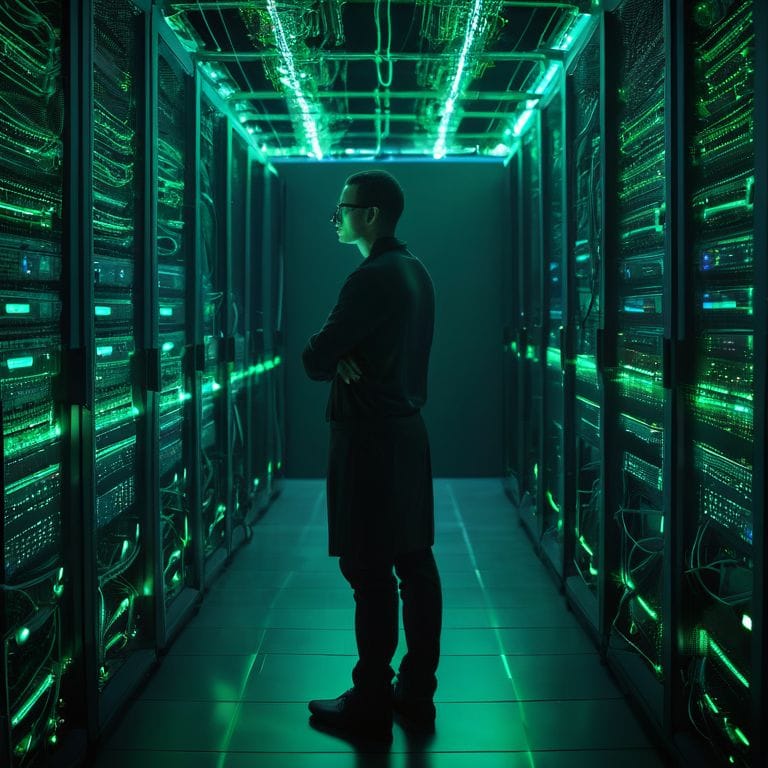I still remember the first time I heard someone explain the difference between web1 web2 and web3 as if it was a revolutionary concept that would change the world. As a seasoned tech analyst, I’ve seen my fair share of hype and overcomplicated explanations. But what really gets my blood boiling is when people try to pass off buzzwords as genuine innovation. The truth is, understanding the evolution of the web is not about tossing around fancy terms; it’s about grasping the fundamental shifts in how we interact with the internet.
As someone who’s spent years covering the tech industry, I’ve learned to cut through the noise and focus on what really matters. In this article, I promise to provide you with a no-nonsense guide to the difference between web1, web2, and web3. I’ll share my own experiences, insights, and analysis to help you make sense of the current landscape. My goal is to empower you with the knowledge you need to make informed decisions, without resorting to jargon or marketing fluff. So, if you’re ready to dive into the real story behind the web’s evolution, let’s get started.
Table of Contents
- Unpacking Web Evolution
- The Difference Between Web1 Web2 and Web3
- Navigating the Web Evolution: 5 Key Tips to Understand the Difference Between Web1, Web2, and Web3
- Key Takeaways: Navigating the Web1, Web2, and Web3 Landscape
- Cutting Through the Noise
- Beyond the Hype: A New Era Unfolds
- Frequently Asked Questions
Unpacking Web Evolution

As we delve into the history of the internet, it’s clear that the transition from Web 1.0 to Web 2.0 was a significant turning point. Web 1.0, with its static web pages and limited user interaction, gave way to the more dynamic and interactive Web 2.0. This shift enabled the creation of social media platforms, online communities, and decentralized internet benefits that we still enjoy today. However, the underlying infrastructure remained largely centralized, with a small number of large corporations controlling the flow of information.
The emergence of Web3, with its focus on blockchain technology, promises to further decentralize the internet. By utilizing blockchain, Web3 aims to create a more secure and transparent online environment. This, in turn, could lead to a wide range of web3 use cases, from secure online voting systems to decentralized finance applications. As we look to the future of the web, it’s essential to understand the potential benefits and challenges of this new paradigm.
The evolution of web technologies is a continuous process, with each new iteration building upon the previous one. As we move forward, it’s crucial to consider the implications of these advancements on our online lives. By examining the decentralized internet benefits and potential applications of Web3, we can gain a deeper understanding of what this new era of the internet might hold.
Decentralized Internet Benefits Revealed
As we delve into the decentralized architecture of Web3, it’s essential to understand the benefits that come with it. By distributing data and applications across a network of nodes, rather than relying on centralized servers, Web3 promises to provide a more secure and resilient internet experience.
The shift towards a decentralized internet also brings greater autonomy to users, allowing them to have more control over their personal data and online interactions. This, in turn, can lead to a more open and transparent online ecosystem, where individuals and communities can thrive without being beholden to large corporations or governments.
History of Internet Web 10 vs Web 20
The transition from Web 1.0 to Web 2.0 marked a significant shift in how users interacted with the internet. This era was characterized by the emergence of social media platforms, which enabled users to create and share content with ease.
The key difference between Web 1.0 and Web 2.0 lay in the user-generated content aspect, where users became the primary creators of online content, moving away from static web pages.
The Difference Between Web1 Web2 and Web3

As we delve into the nuances of each web iteration, it’s essential to understand the history of the internet and how it has shaped the current landscape. Web 1.0, with its static websites and limited user interaction, laid the groundwork for the more dynamic and interactive Web 2.0. The latter brought about a significant shift in how users engaged with online content, paving the way for social media, blogs, and other user-generated content platforms.
The introduction of decentralized internet benefits has been a game-changer, offering users more control over their data and online experiences. This paradigm shift is largely driven by the integration of blockchain in web3, enabling secure, transparent, and community-driven networks. As we look to the future of the web, it’s clear that web3 use cases will continue to expand, transforming the way we interact with online services and each other.
In the context of evolution of web technologies, web3 represents a significant leap forward, with its focus on decentralization, artificial intelligence, and the Internet of Things (IoT). As we explore the web3 use cases, it becomes apparent that this new iteration of the web has the potential to revolutionize industries and transform the way we live and work. By examining the decentralized internet benefits, we can gain a deeper understanding of the opportunities and challenges that lie ahead.
Blockchain in Web3 Future of the Web
As we dive into the world of Web3, it’s clear that blockchain technology is playing a pivotal role in shaping its future. This decentralized approach to data storage and transmission is enabling a new level of security and transparency, making it an attractive proposition for developers and users alike.
The use of distributed ledger systems is allowing for the creation of decentralized applications (dApps) that operate independently of traditional centralized authorities, giving users more control over their data and interactions.
Web3 Use Cases Revolutionizing Technologies
As we delve into the realm of Web3, it’s becoming increasingly clear that this new iteration of the internet is not just about decentralized networks, but about creating a more immersive and interactive experience. Web3 use cases are revolutionizing the way we think about technologies, from virtual reality to artificial intelligence.
The potential applications of Web3 are vast, with revolutionary technologies like the Internet of Things (IoT) and blockchain-enabled smart contracts set to transform industries and create new opportunities for innovation and growth.
Navigating the Web Evolution: 5 Key Tips to Understand the Difference Between Web1, Web2, and Web3
- Focus on the fundamental shifts in user interaction and data ownership, rather than just the version numbers
- Recognize that Web3 is not just about blockchain, but about a decentralized approach to the internet and its potential to democratize data
- Understand the concept of decentralization and how it affects the security, transparency, and accessibility of online services
- Explore the various use cases of Web3 technologies, such as cryptocurrency, NFTs, and decentralized finance (DeFi), to grasp their potential impact on industries
- Stay critical of hype and marketing jargon, and instead, delve into the technical specifics and supply chain implications of Web3 solutions to make informed decisions
Key Takeaways: Navigating the Web1, Web2, and Web3 Landscape
Web1 and Web2 represent fundamentally different approaches to internet interaction, with Web1 focusing on static content and Web2 on dynamic user-generated content, while Web3 promises a decentralized, blockchain-driven revolution
The integration of blockchain technology in Web3 is poised to significantly impact data privacy, security, and ownership, offering users more control over their personal data and online experiences
Emerging use cases for Web3, such as decentralized finance, non-fungible tokens, and virtual reality worlds, are set to revolutionize various industries and aspects of our lives, from entertainment and art to finance and commerce
Cutting Through the Noise
The difference between Web1, Web2, and Web3 isn’t just a incremental upgrade – it’s a fundamental paradigm shift in how we interact with the internet, from static to dynamic, and now to decentralized; it’s about who controls the narrative, and I firmly believe that Web3 is the first real attempt to put the power back in the hands of the users.
Julian Croft
Beyond the Hype: A New Era Unfolds

As we’ve navigated the evolution of the web, it’s clear that the differences between Web1, Web2, and Web3 are more than just marketing terms – they represent a fundamental shift in how we interact with the internet. From the decentralized internet of Web3 to the blockchain technology that underpins it, the future of the web is being rewritten before our eyes. We’ve seen how Web3 use cases are revolutionizing technologies and industries, from finance to healthcare, and it’s exciting to think about what’s to come.
So as we look to the future, let’s remember that the real power of Web3 lies not in its technology, but in its potential to empower users and create a more equitable internet ecosystem. As we move forward into this new era, it’s up to us to harness the potential of Web3 and create a brighter, more decentralized future for all – one that’s driven by innovation, not just hype.
Frequently Asked Questions
How do the security features of Web3 differ from those of Web1 and Web2?
Web3’s security features are a significant leap forward, leveraging blockchain and cryptography to provide end-to-end encryption, secure data storage, and decentralized identity management. Unlike Web1 and Web2, which relied on centralized authorities and vulnerable to single-point failures, Web3’s decentralized architecture ensures that data is distributed and resilient to attacks.
What are the potential drawbacks or challenges of adopting a decentralized Web3 model?
While decentralization offers numerous benefits, it also presents challenges like increased complexity, higher energy consumption, and potential security risks. Scalability and user experience can also be compromised, making it essential to weigh these trade-offs against the advantages of a decentralized model.
How will the shift from Web2 to Web3 impact the average user's online experience and data ownership?
The shift from Web2 to Web3 will empower users with greater control over their data and online experiences. With decentralized networks and blockchain, individuals will have more agency over their personal info and digital footprint, potentially leading to a more secure and transparent internet experience.




